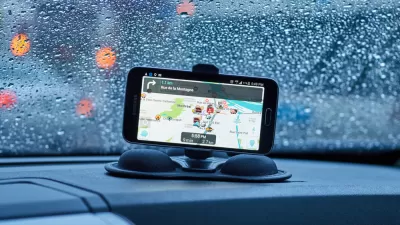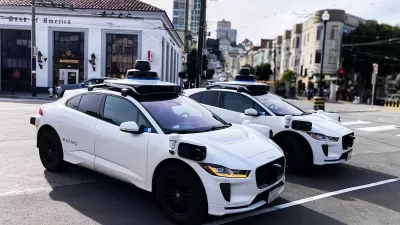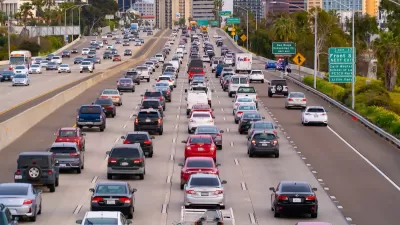As America's VMT returns to record highs, more of the miles are coming from cities than ever before.

"Urban driving is up 33 percent in that time; rural driving has fallen 12 percent," Henry Garbar writes for Slate. That is a huge change in vehicle miles traveled (VMT) and, while it's tempting to look for reasons in the classification of roads or in demographic change, those only account for part of the jump. "America’s cities (by which I mean, mostly, their sprawling exurbs) have grown by 19 percent in that time—meaning that bigger cities account for just 58 percent of the urban driving mileage increase," Garbar reports.
The missing 42 percent is hard to account for. It could be a result of transit decline, which is concentrated in cities, it could be that city drivers drive more when gas costs are lower, or it could have to do with the kinds of cities that are growing. "We know that urban growth—especially over the past few years—has been concentrated in sprawling Sun Belt metropolises, so it would make sense for driving to outpace urban population growth," Garbar writes.
Urbanists have long touted less need to drive as an advantage to city life. If cities and the way we use them continue to follow this trend, some of that advantage may whither away.
FULL STORY: Urban America Is Driving More. Rural America Is Driving Less. What Gives?

Alabama: Trump Terminates Settlements for Black Communities Harmed By Raw Sewage
Trump deemed the landmark civil rights agreement “illegal DEI and environmental justice policy.”

Study: Maui’s Plan to Convert Vacation Rentals to Long-Term Housing Could Cause Nearly $1 Billion Economic Loss
The plan would reduce visitor accommodation by 25% resulting in 1,900 jobs lost.

Planetizen Federal Action Tracker
A weekly monitor of how Trump’s orders and actions are impacting planners and planning in America.

Waymo Gets Permission to Map SF’s Market Street
If allowed to operate on the traffic-restricted street, Waymo’s autonomous taxis would have a leg up over ride-hailing competitors — and counter the city’s efforts to grow bike and pedestrian on the thoroughfare.

Parklet Symposium Highlights the Success of Shared Spaces
Parklets got a boost during the Covid-19 pandemic, when the concept was translated to outdoor dining programs that offered restaurants a lifeline during the shutdown.

Federal Homelessness Agency Places Entire Staff on Leave
The U.S. Interagency Council on Homelessness is the only federal agency dedicated to preventing and ending homelessness.
Urban Design for Planners 1: Software Tools
This six-course series explores essential urban design concepts using open source software and equips planners with the tools they need to participate fully in the urban design process.
Planning for Universal Design
Learn the tools for implementing Universal Design in planning regulations.
Caltrans
Smith Gee Studio
Institute for Housing and Urban Development Studies (IHS)
City of Grandview
Harvard GSD Executive Education
Toledo-Lucas County Plan Commissions
Salt Lake City
NYU Wagner Graduate School of Public Service





























